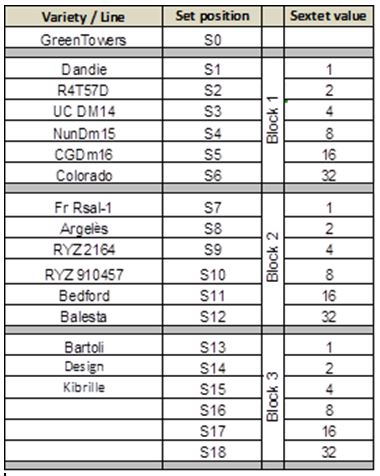Gouda, The Netherlands
May 1, 2017
The International Bremia Evaluation Board for the EU (IBEB-EU) has evaluated all Bremia races found in 2016 and earlier. Once again, many outbreaks of Bremia were caused by new Bremia races with only local importance. However, one race spread in most European counties and IBEB-EU decided to denominate this isolate as the new race Bl: 33EU. The Board emphasizes the importance of chemical control and hygiene measures in addition to the use of resistant varieties to prevent the development of new races.
Bremia lactucae, causing downy mildew in lettuce, is genetically very variable. Breeders work together to monitor the changes in the Bremia population in response to the introduction of more and more resistances.
In November 2016, the International Bremia Evaluation Board Europe (IBEB-EU) met in Paris to evaluate the Bremia lactucae isolates found in Europe in 2016. In total 593 new isolates were analysed in 2016. Many of these isolates were taken from fields with an unexpected Bremia infection. As expected, the majority of these isolates had a novel virulence pattern, but also isolates were found with the same pattern as the denominated isolates Bl: 24EU, 29EU, 30EU and 32EU. The most frequently found denominated race was Bl: 29EU.
Most of the novel isolates encountered in 2016 were found only in a restricted area and only in one season. However, two isolates appeared to have spread more widely and survived more than one season. These isolates were further evaluated by IBEB-EU. In April 2017 IBEB-EU concluded that only one of these widespread, novel isolates shows consistent results in different labs. This isolate is denominated as Bl:33EU. Bl: 33EU is widely spread in France and was also found in Germany, the Netherlands, United Kingdom, Scandinavia and Belgium. Until now it has not spread to South European countries. Bl: 33EU is similar to Bl: 29EU, but breaking a few additional resistances. The sextet code for Bl: 33EU is ‘IBEB-C 62-07-06’.
Proper hygiene practices, such as removal of debris and diseased plants, will always reduce the spread of Bremia in lettuce crops. The board emphasizes that resistance to Bl: 16-33EU should not be understood as a full insurance against Bremia. Occasionally, problems may occur due to a local new isolate that does not survive over years and does not spread to other areas. Therefore, chemical control and hygiene measures will be important for any lettuce variety. Fungicide application, especially in a young plant stage, gives additional protection to resistant lettuce crops, and will help prevent the development of new Bremia races.
Denominated isolates are given a standardized code, following the ISF guidelines for pathogen coding. A new element added to the Bremia race code is the suffix to distinguish EU and US races, referring the distinct populations in Europe (EU) and America (US). Detailed studies did not show long distance spread of Bremia-isolates between the two continents. Therefore the denomination of European and American isolates is performed by two separate, closely collaborating continental working groups, IBEB-EU and IBEB-US.
The sextet code for Bl: 33EU is ‘IBEB-C 62-07-06’. The sextet code describes the virulence pattern on a fixed set of lettuce lines for race determination. The IBEB set was revised recently. The IBEB-C set was adopted on March 1st 2016. The IBEB-C set is an updated and streamlined version of the previous EU-B set (see table below). This information is also available at the ISF website: www.worldseed.org/isf/ibeb.html'
Table: IBEB-C set for race determination

IBEB-EU consists of representatives of the Dutch and French seed business associations Plantum NL and UFS, and the organisations of GEVES and Naktuinbouw. IBEB is supported by several Bremia researchers across Europe. The breeding companies were represented by lettuce breeders of Bejo Zaden, Enza Zaden, Gautier Semences, Bayer CropScience Vegetable Seeds, Rijk Zwaan, Monsanto Seminis, Syngenta Seeds and Vilmorin.
For testing and breeding purposes all nominated races and the IBEB-C determination variety set are available at GEVES/SNES (France) and at Naktuinbouw (The Netherlands).